There is a widespread misconception that flower arranging is a traditional Japanese art. Actually, flower arranging, like many other cultural traditions adopted by the Japanese, originated in China. It was during the T'ang dynasty, as Chinese navigators increased contacts between the two countries, that calligraphy and flower arranging were first introduced to Japan. Lending their own native style to this Chinese craft, the Japanese refined the art of flower arranging. Today, there are more than three thousand schools of Japanese flower arranging.
Traditional Chinese flower arranging differs from the well-known Japanese form of the art. Unlike the particular placement of flowers which emphasizes structure and form in Japanese flower arranging, the Chinese craft is an expression of mood and feeling which does not adhere to a standard form, While arrangements may lack the decorative beauty of their Japanese counterparts, they possess a creativity seldom seen in the Japanese pieces.
This past April, a unique exhibit of traditional Chinese flower arranging was co-sponsored by the Women's Garden and Art Club of the Republic of China and the National History Museum. Lasting only two weeks, the exhibit represented years of painstaking research. Hoping to spur a revival of interest in Chinese flower arranging, the exhibit's sponsors presented a historical retrospective of the art of flower arranging, including examples of different styles within each time period. All who participated in staging the exhibit are to be commended for their efforts.
The members of the Women's Garden and Art Club of the Republic of China are a group of Chinese ladies with a deep love for their country's cultural heritage. The group focuses on the practice and promotion of traditional Chinese crafts such as flower arranging, brush painting, and porcelains. To date, they have sponsored projects in Chinese gardening, knotting, frog making, paper cutting, calligraphy and painting.
Club chairwoman, Tung Mei-chen explains that the impetus for the April exhibit came from a visit to an international flower show several years ago. When she inquired about the particularly impressive beauty and grace of the Japanese works presented, she was surprised to learn from the sheepish guide that the roots of the art lay in China.
Inspired to research the cultural history of flower arranging, the Club began scrutinizing ancient scroll paintings at the National Palace Museum. Small picture cards of the changing forms of flower arranging through the dynasties were drawn up and mailed to the public. As public response indicated widespread interest in this project, the group continued its research.
Greatly impressed by the group's project, National History Museum director, Ho Hao-t'ien offered the museum as an exhibition site, and offered the guidance of museum employee, Huang Yung-ch'uan. With twenty years of research experience in the field of flower arranging, Huang was able to aid the group in selecting fifty paintings representing the different stages in flower arranging following the T'ang dynasty.
From the paintings, the group recreated flower arrangements and interior designs from distant epochs. Club members spent hours combing museums and shops in search of authentic set pieces and furniture. In cases where real flowers could not be locally sourced, artificial flowers were constructed. Noted architect Huang Yung-hung included the four traditional types of arrangements--namely temple, court, literati, and folk flower arrangements in his staging of the exhibition.
An enormous success, the exhibit attracted long queues of visitors every day, many of them staying from opening, until closing time. In addition to visual enjoyment, visitors gained an awareness of the importance of flower arranging throughout Chinese history.
Flowers have long been a theme in Chinese literature. The flower is the living embodiment of spring and natural life. Consisting of a few blossoms in a vase, literati arrangements seen at the exhibit were small, reflecting a personal pursuit of tranquility and harmony within a small environment. A large plantain leaf on the floor beside a kuchin (classical stringed instrument), completed the scene.
At the zenith of the literati movement during the Sung dynasty (960-1279 A.D.), flower arranging, along with appreciation of painting, tea and scents was considered an important art for scholars to cultivate. By the Ming dynasty (1368-1644 A.D.), the art was practiced widely amongst the people, used in homes and during special festive occasions.
Temple arrangements reflect Buddhism's influence on the people's lifestyle. A single large lotus blossom in a vase or bowl provided the ideal representation of the Buddhist search for inner peace and enlightenment.
The exhibit room displaying the court collection was replete with the royal trappings of ancient palaces. A magnificent dragon throne, intricately carved gold screens, and tiger skin rugs lent an air of imperial majesty to the room. A variety of flowers and plants displayed in large vases and pots augmented the lavish decor. The profusion of color and scent was an apt reflection of imperial splendor.
Folk flower arrangements reflected seasonal and holiday variations. Scenes embellished by lanterns, scrolls, screens and vase stands, displayed flower arrangements signifying luck and prosperity. Whether on a table, the floor, or at the doorway, flowers were always a decorative presence in the Chinese home.
The success of the exhibit was a positive indication of public awareness of the importance of flowers in daily life. It also served as a reminder that this traditional art need not be confined to museums, but can be continued and appreciated in modern homes.
(Gerald Hatherly)
[Picture Caption]
1. Traditional Chinese flower arrangements express inner feelings. This daisy and blossom piece, along with the accompanying persimmon, firecrackers and spectre are traditional symbols for hope, peace and prosperity. 2. Among the many dignitaries present at the exhibition opening were former president Yen and members of the host Women's Garden and Art Club. 3. This bamboo tray and vase arrangement combine the blooms of the cape jasmine, pansy and chrysanthemum. 4. This exquisite arrangement of orchids in a bamboo basket can be hung or displayed on a table.
1,2. The arrangements were patterned after ancient scroll paintings from the National Palace Museum collection. 3. A simple yet elegant display of pine and plum blossom. 4. The Women's Garden and Art Club leader, Tung Mei-chen. 5. A beautiful arrangement of narcissus in a white porcelain vase set on a carved wooden stand.
1. The displays utilized traditional Chinese home decorations such as fan-shaped windows and moon doors. 2. This flower arrangement for the Dragon Boat Festival is replete with holiday symbols of good fortune. 3. A basket of summer blooms is highlighted by June's lotus blossom.
The religious flower arrangements reflect the influence of Buddhism in China. Arrangements were simple and usually used the lovely lotus flower as the center-piece.

2. Among the many dignitaries present at the exhibition opening were former president Yen and members of the host Women's Garden and Art Club.
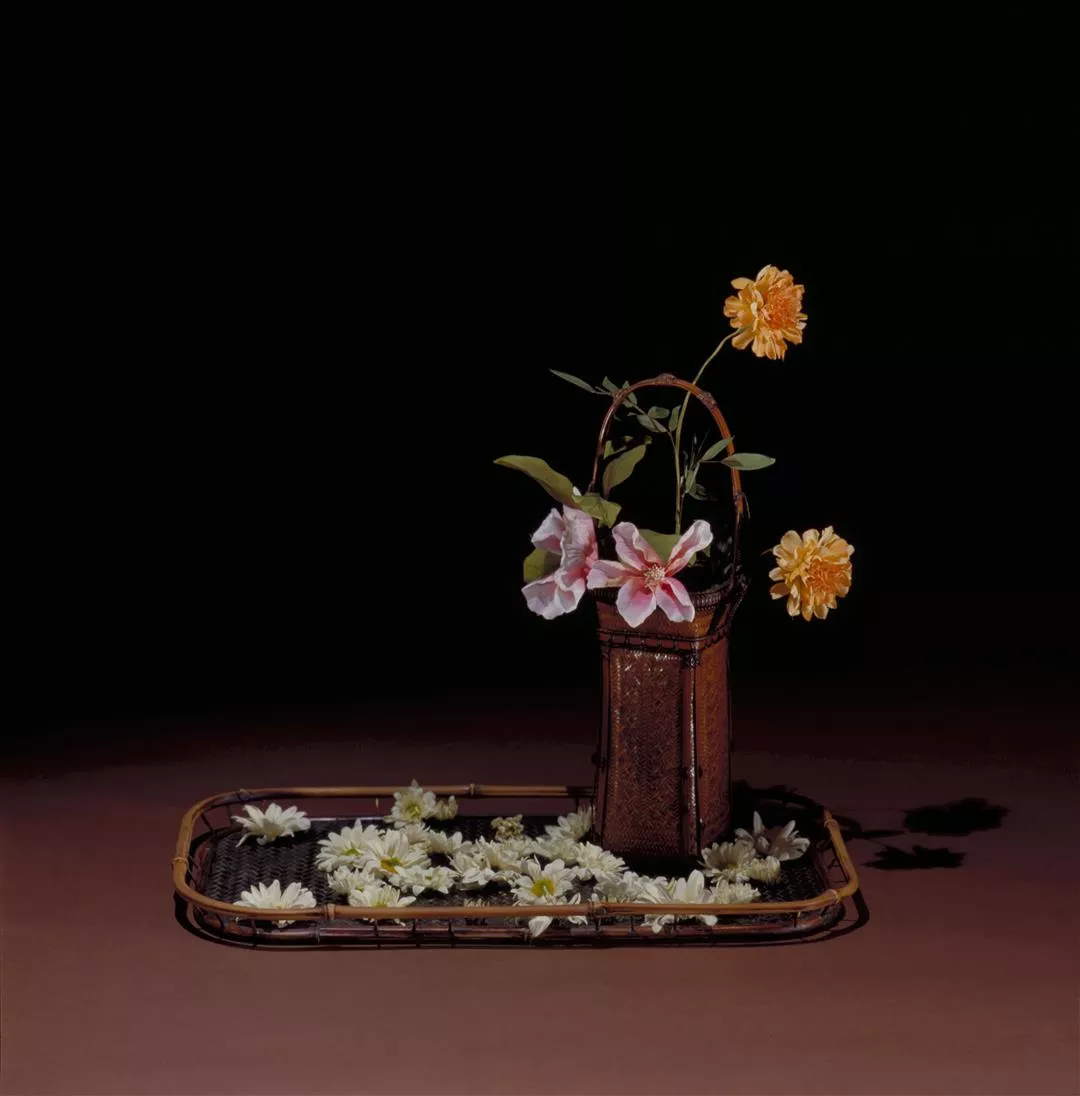
3. This bamboo tray and vase arrangement combine the blooms of the cape jasmine, pansy and chrysanthemum.
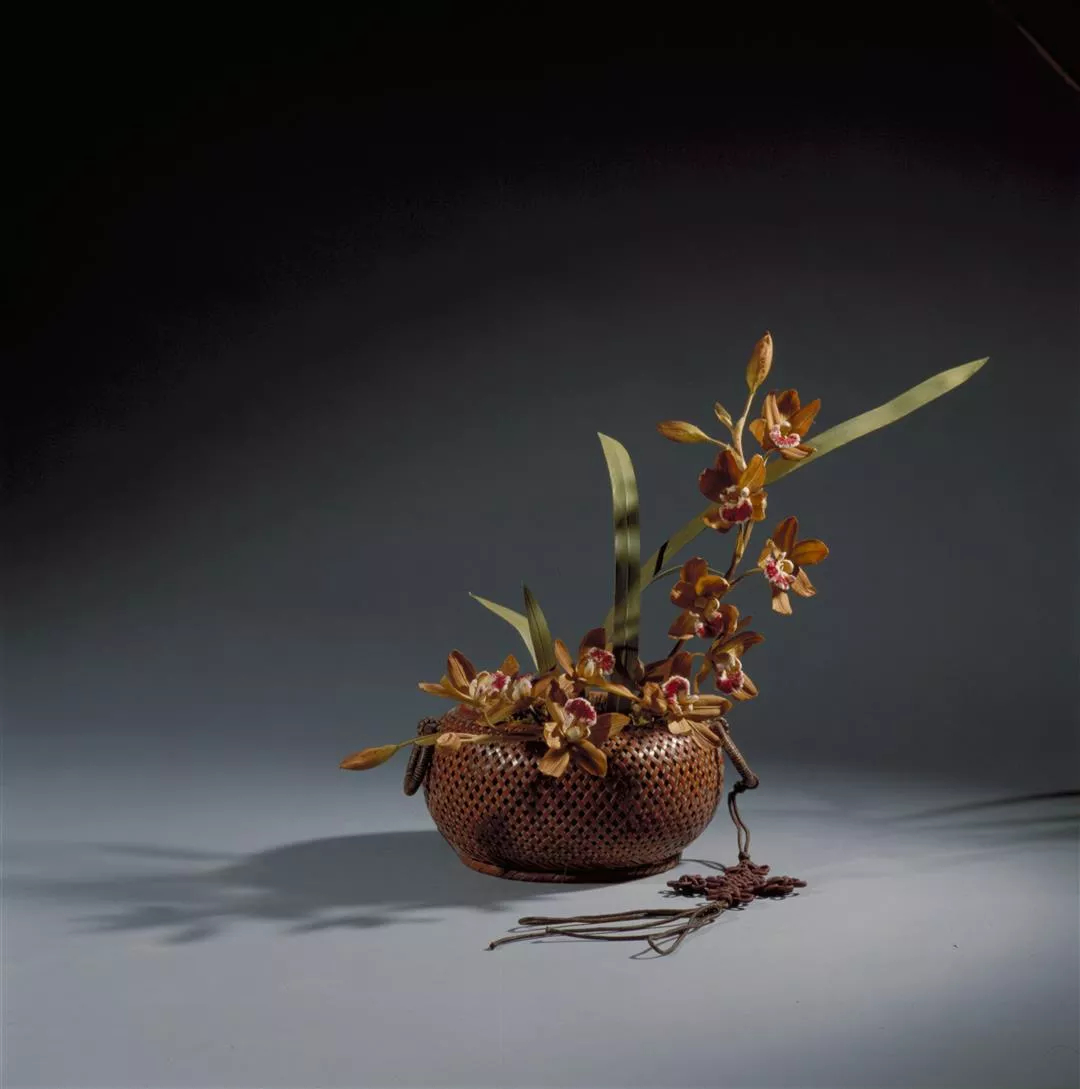
4. This exquisite arrangement of orchids in a bamboo basket can be hung or displayed on a table.

1,2. The arrangements were patterned after ancient scroll paintings from the National Palace Museum collection.

1,2. The arrangements were patterned after ancient scroll paintings from the National Palace Museum collection.

3. A simple yet elegant display of pine and plum blossom.

4. The Women's Garden and Art Club leader, Tung Mei-chen.
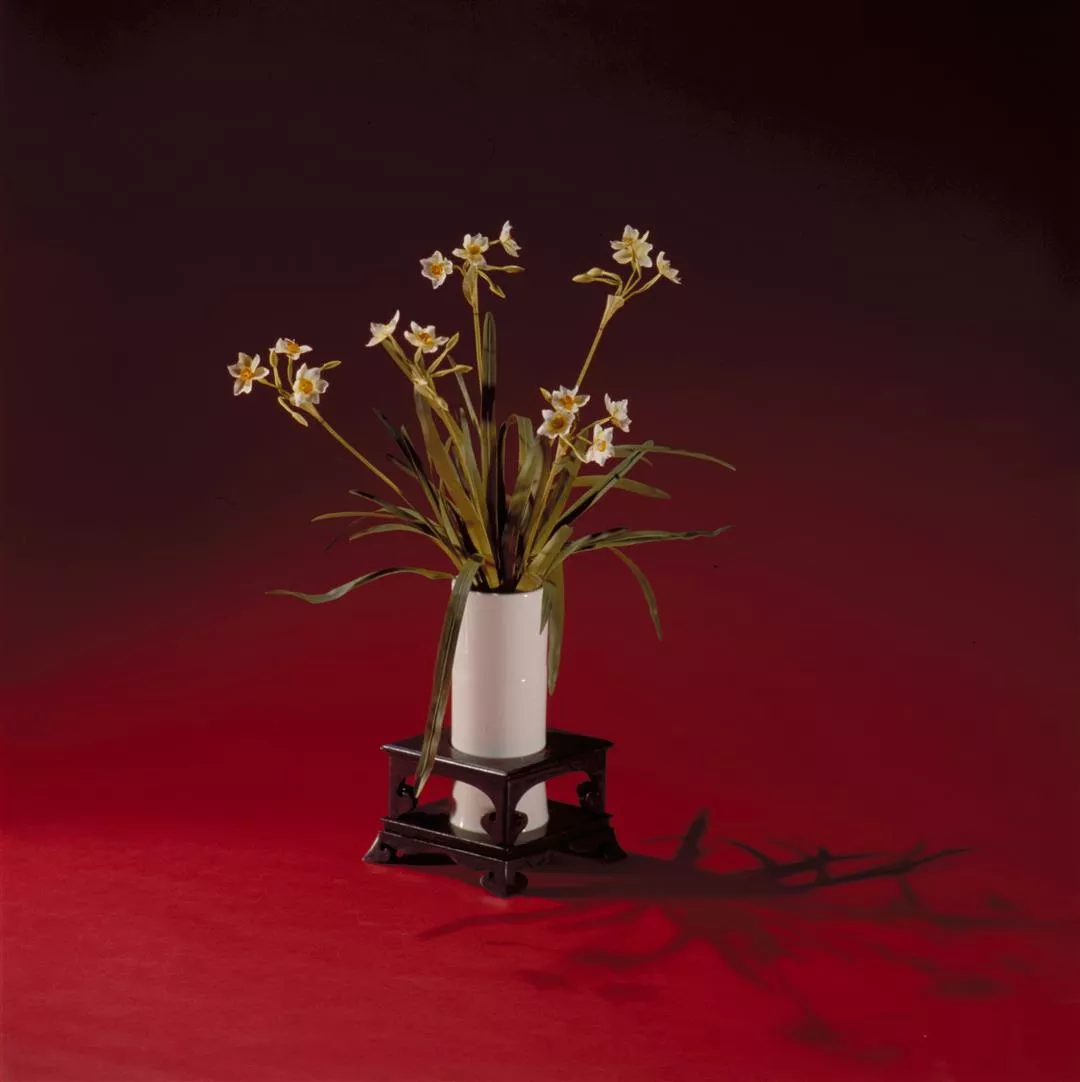
5. A beautiful arrangement of narcissus in a white porcelain vase set on a carved wooden stand.
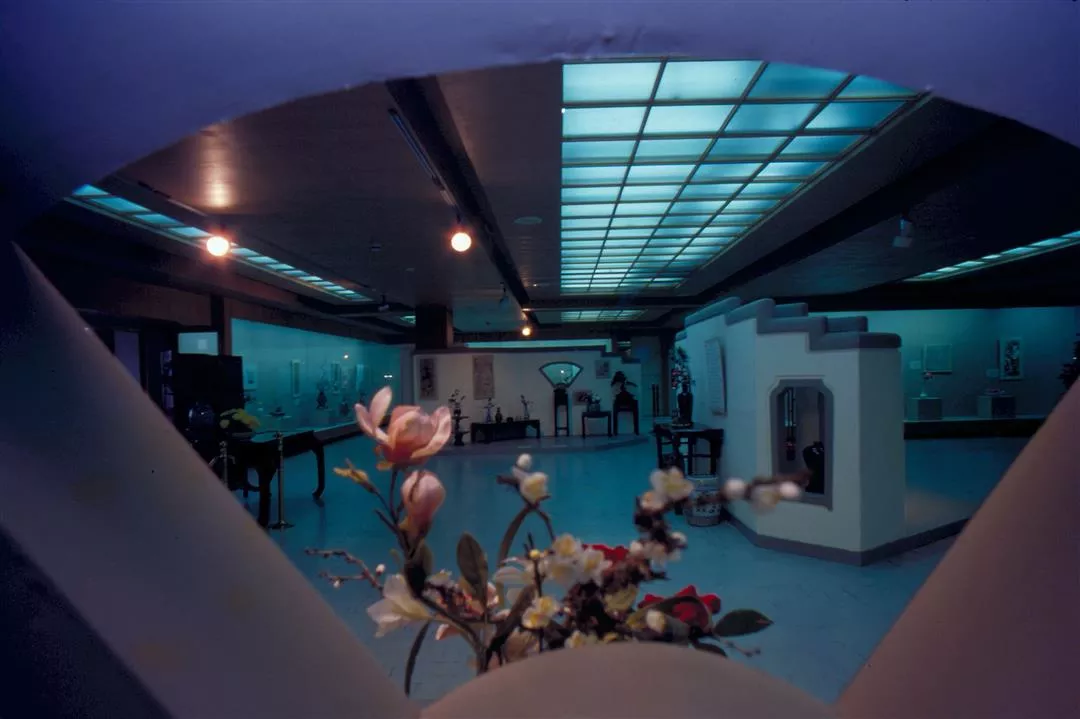
1. The displays utilized traditional Chinese home decorations such as fan-shaped windows and moon doors.

2. This flower arrangement for the Dragon Boat Festival is replete with holiday symbols of good fortune.

3. A basket of summer blooms is highlighted by June's lotus blossom.

The religious flower arrangements reflect the influence of Buddhism in China. Arrangements were simple and usually used the lovely lotus flower as the center-piece.
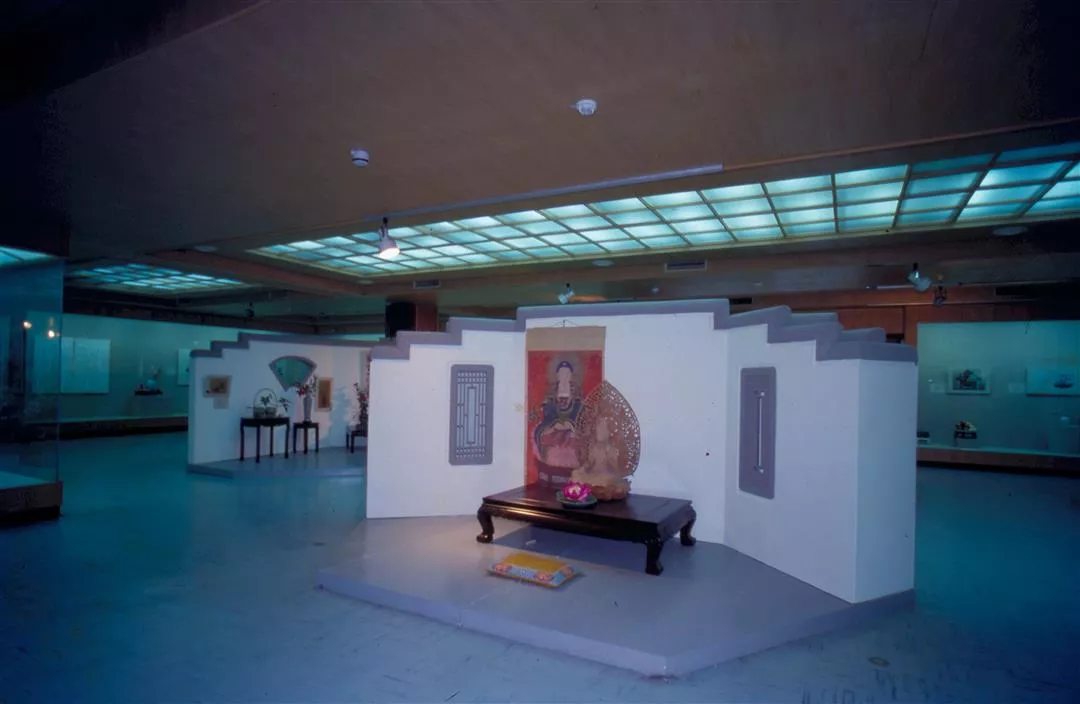
The religious flower arrangements reflect the influence of Buddhism in China. Arrangements were simple and usually used the lovely lotus flower as the center-piece.